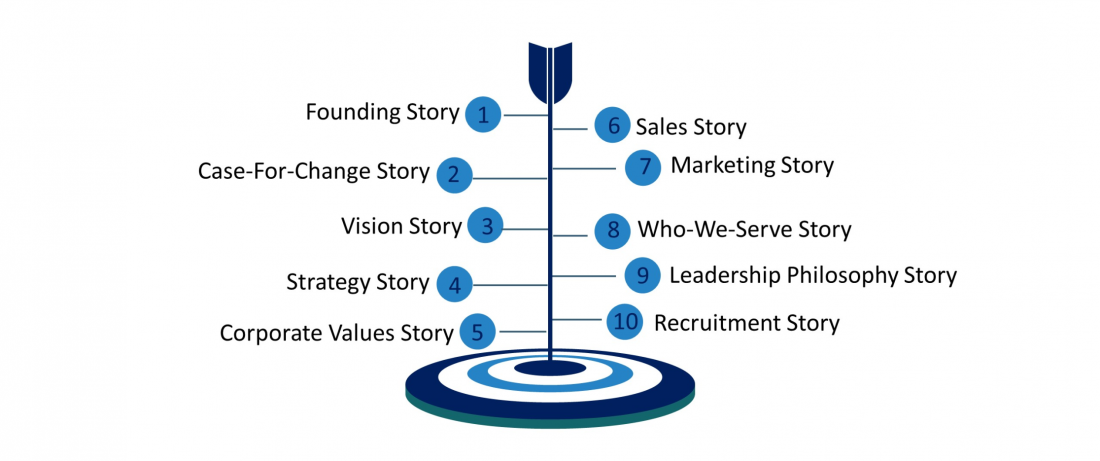By: Dr. Bhavana Koliyot, Founder, COMMSIMPACT FZE
Humanise your internal communication through stories.
Storytelling especially oral narratives are as old as history. We’ve all listened to and relished stories. No matter the age or generation we belong to, our hearts and minds are always open to receive a good story. And this is where lies the irresistible attraction of stories; they appeal to both our emotions and reasoning alike. In fact, they blend the two to lend a holistic impetus to perspective building or decision making. They also help to put a face to an issue, makes ideas, policies and procedures more immediate and visible.
Stories also humanise the narrator and inspires the audience to connect with them which is a great uptick for leader communication.
Most importantly, stories have the unique power of getting ideas across in an impactful and emotive way which moves people to action. Moreover, the power of stories rarely is limited to the primary listener. It almost always gets carried forward through in the inspired narrations and reiterations of listeners, like a ball set in motion with a unique life and momentum of its own.
How many times have we listened to the NASA janitor’s story whereby when asked by the visiting President John F. Kennedy what he does, he replies with quiet confidence: ‘I am helping put man on the moon’- this is an iconic example of a vision story which rolls off the listener’s tongue for ever and ever, an immortal narration not once losing its passion. Similarly, some of us would have also listened to the story of Christopher Wren, a seventeenth-century English architect who walked one day incognito amongst a group of men who were at work on the building site of St. Paul’s Cathedral. When asked what they were doing, one man replied, “I am cutting a piece of stone’; while another said, “I am earning five shilling two pence a day”. However, when the same question was addressed to a third man, he replied, “I am helping Sir Christopher Wren to build a beautiful cathedral.” The third man had a vision; he could see beyond the cutting of stone to the building of a beautiful cathedral.
Stories help to clarify this vision and bring about a transformational change across the organisation by inspiring teams to achieve high impact business results.
“The only way to bridge a purpose gap is to embed your reflection, exploration, discussion, and action in the heart of your business and your organisation”.
– (Ref: ‘Purpose: Shifting from why to how’, McKinsey Quarterly, 22 April 2020)
So what stories should organisations or leaders narrate?
The below are great examples of story ideas from Paul Smith’s The 10 Stories Great Leaders Tell (2019, Sourcebooks), which helps to focus on and unearth precious narratives that lie buried or strewn carelessly across organisations, oft forgotten amidst internal changes across leadership, strategic priorities, structure, teams and processes.

1. The Founding Story: This is the ‘where-we-came-from’ story which gives employees a chance to be part of something larger than their job.
2. A Case-For-Change Story: This narrative explores the reason why change is necessary. More than profit figures and the cliched phrase ‘to be ahead of the competition’, focus on the human angle, the tangible benefits to those affected by the change (could be employees, customers or community). The human angle is a powerful motivator than any data metrics, a more compelling reason to put an end to complacency and take the first passionate step towards change.
3. The Vision Story: This is the ‘where-we-are-going’ story. Ask the question who will benefit most if the vision is achieved; employees, shareholders, environment, community? And how would life be different for them? Also keep in mind that the target audience to whom you are narrating your story should empathize with the group who stands to gain by the realisation of the vision. For most organisations, the objective of the vision story is to inspire their workforce but if you have multiple audiences, you can develop vision stories from different perspectives as well.
4. The Strategy Story: This story will address how you will get from ‘where you are now’ to ‘where you want to be’. It can start with the Founding Story, Case-For-Change Story and the Vision Story and then narrate what you need to do to get to the Vision. Include metrics of your success (revenue, profits, market share, brand value and perception)
5. The Corporate Values Story: Values are mere words until they are tested, lived and brought to life. Give stories that exemplify how someone lived/ or did not live a value and the positive/negative ramifications this had for your business, about the awkward predicament of choice where the corporate value led the way before any policy manual, or how employees acted in a way that made the founder proud.
6. The Sales Story: This story explains what your company does for your customers and how. Choose a client from a typical industry you serve, sketch a brief outline of events that led up to them requiring your product/service (a specific instance), list what your company did for them and the positive outcomes for the customer.
7. The Marketing Story: This narrative communicates how your product or service is different from your competitors. Think of a few customer success stories, has any customer used a competitor product and switched to yours? Choose one of these real-life experiences and craft a story around it.
8. The Who-We-Serve Story: These are first hand accounts of customers whom you served or whom you aspire to serve. Remember customer information is not mere data; it should encompass their dreams, aspirations, immediate circumstances that influence decision making and so on; in short, an in-depth perspective of different types of customers.
9. The Leadership Philosophy Story: This explains why the leader leads the way he does. To help find personally defining moments, ask the questions: what was your biggest leadership mistake and what did you learn from it, what leadership decision are you most proud of and why; which leader do you most admire and what was the moment that you realised that, what are the principles you are least willing to compromise upon?
10. The Recruitment Story: Find the human angle, the reasons that inspire job aspirants to choose you as a preferred employer. Think beyond salary, think of qualitative perks like internal progression opportunities, challenging projects, world class professional community, learning and development opportunities, sustainability commitment and of course the overall employee experience.
When these stories are tracked down and narrated with audacious passion and infectious enthusiasm, they help to effectively engage employees so that they understand where the organisation came from, where it is going and how it is going to get there.





